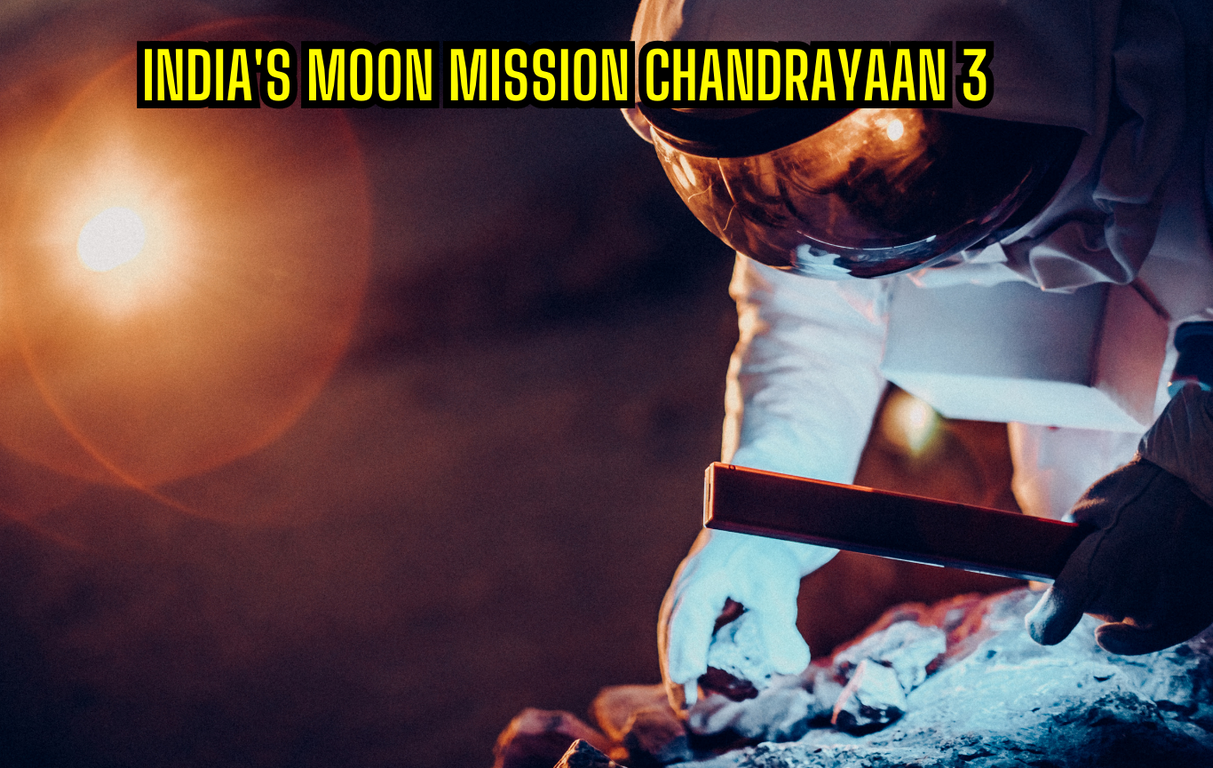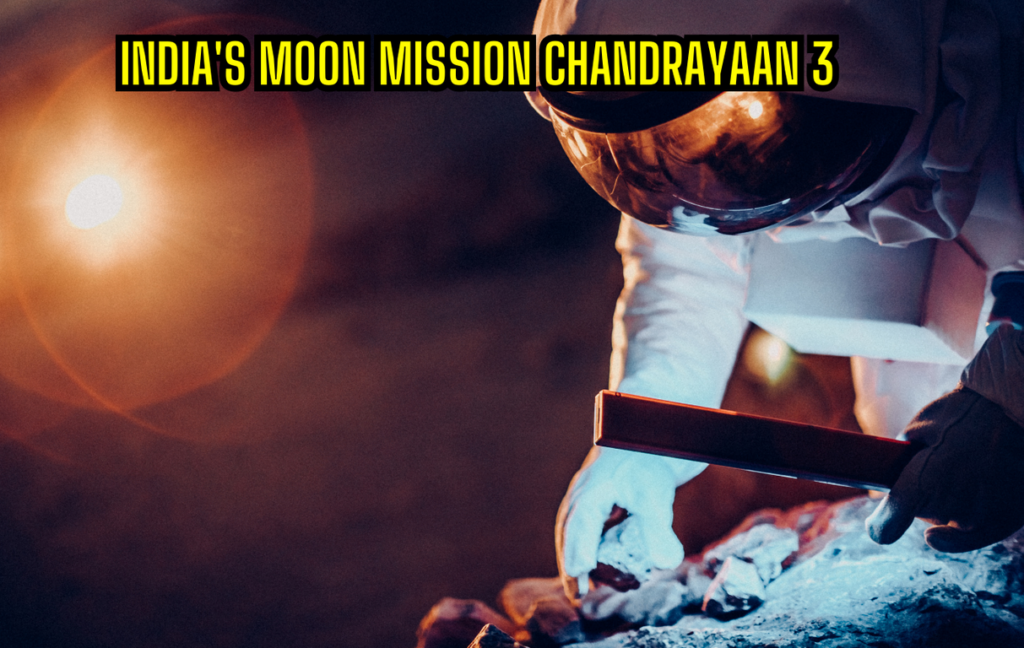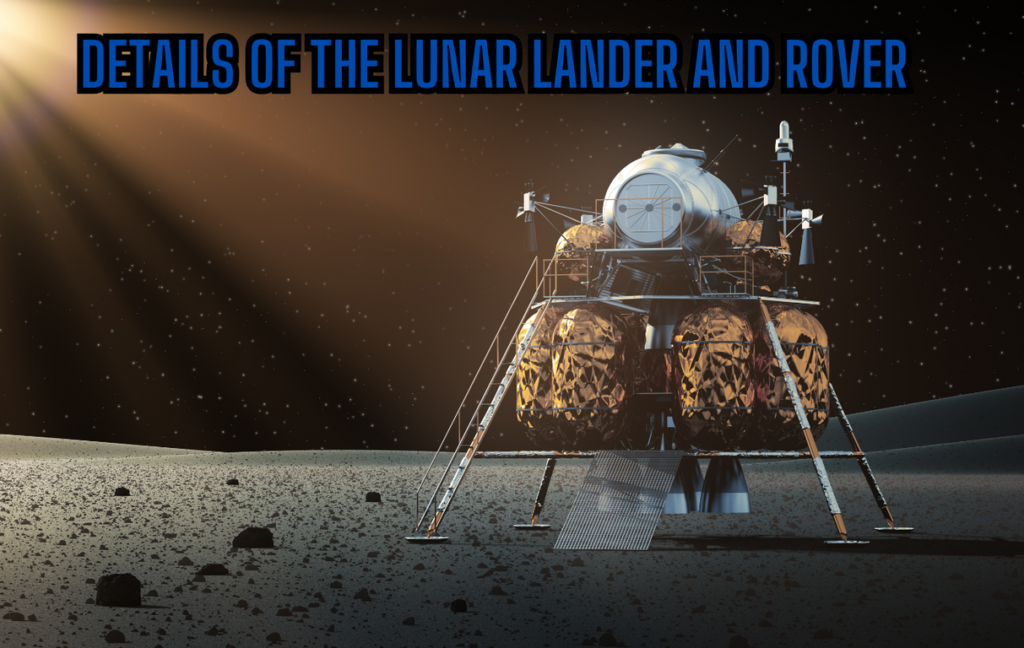
Get Ready to Explore the Moon with India’s Moon Mission Chandrayaan 3
Table of Contents
In an ambitious endeavor to explore the mysteries of the Moon, India is all set to launch its next lunar mission, known as Chandrayaan-3. This mission, eagerly anticipated by scientists and space enthusiasts alike, aims to delve deeper into the uncharted territories of our closest celestial neighbor. With meticulous planning and cutting-edge technology, Chandrayaan-3 is poised to unlock a wealth of knowledge about the Moon, shedding light on its formation, composition, and evolution.
The launch of Chandrayaan-3 marks a significant leap forward in India’s space exploration program. Equipped with a suite of advanced scientific instruments, this mission will enable scientists to conduct detailed studies of the lunar surface, its geology, and the presence of water molecules. The spacecraft, comprising a lander and a rover, will navigate the rugged lunar terrain, collecting valuable data to unravel the Moon’s enigmatic past and provide crucial insights into the origins of our planet. As we eagerly await this groundbreaking mission, the anticipation and excitement among the scientific community continue to build, as Chandrayaan-3 promises to unveil new and fascinating discoveries about our celestial companion.

Overview of India’s Moon Mission Chandrayaan 3
The Chandrayaan-3 mission serves a clear purpose – to further explore the lunar surface and gather valuable data. This ambitious endeavor involves a highly skilled team of scientists, engineers, and astronauts, all working together to ensure its success. With their collective expertise, they are equipped to tackle the challenges that lie ahead. The expected outcomes of this mission are promising – a deeper understanding of the moon’s geology, an insight into its water resources, and the potential discovery of more lunar secrets. Through Chandrayaan-3, we are poised to make significant advancements in lunar exploration and expand our knowledge of the universe.
Mission Purpose
Transitioning from the previous section that explored the challenges faced during the Chandrayaan-2 mission, we now turn our attention to the purpose of the upcoming Chandrayaan-3 mission. The primary objective of this mission is to continue the quest for scientific exploration and advancements on the lunar surface. Building upon the knowledge gained from Chandrayaan-2, this mission aims to further expand our understanding of the moon’s geology, mineralogy, and exosphere.
Through the deployment of advanced instruments and technology, Chandrayaan-3 will gather vital data that will contribute to our understanding of the moon’s origin and evolution. The mission will focus on conducting detailed studies of the lunar surface and subsurface, analyzing the presence of water molecules and minerals, and mapping the topography of the moon.
Additionally, the mission aims to demonstrate India’s technological capabilities in space exploration by successfully landing a rover on the lunar surface.
Team Involved in Mission
The success of the Chandrayaan-3 mission relies heavily on the expertise and dedication of a highly skilled team. This team comprises scientists, engineers, technicians, and researchers from various disciplines, all working together to ensure a successful mission.
Leading the team is a group of experienced scientists who have been involved in previous lunar missions. Their knowledge and expertise in lunar exploration have been invaluable in the planning and execution of the Chandrayaan-3 mission.
In addition to the core team, there are also several supporting teams responsible for various aspects of the mission, such as navigation, communications, and data analysis. Each team member brings their unique skills and knowledge to the table, contributing to the overall success of the mission.
The team’s collective efforts are aimed at achieving the mission’s primary goal of conducting a soft landing on the lunar surface and deploying a rover to explore the Moon’s south pole region. Through their hard work and dedication, this team is poised to make significant contributions to our understanding of the Moon and its resources.
Chandrayaan-3 Mission Expected Outcomes
Chandrayaan-3 mission is expected to yield significant scientific and technological outcomes. One of the key expected outcomes is the enhanced understanding of the lunar surface. By analyzing the data collected by the mission, scientists hope to gain a deeper insight into the composition and geology of the Moon. This will contribute to our understanding of the formation and evolution of the Moon, as well as provide valuable information for future lunar exploration missions.
Another expected outcome is the confirmation of the presence of water on the lunar surface. The previous Chandrayaan missions have provided strong evidence of the existence of water molecules on the Moon. Chandrayaan-3 aims to further confirm and study the distribution of water, which could have important implications for future human missions to the Moon.
Additionally, the mission is expected to facilitate technological advancements in space exploration. The development and testing of new technologies and instruments for lunar exploration will not only benefit future Indian space missions but also contribute to the global space community.

Details of the Lunar Lander and Rover
The details of the Lunar Lander and Rover include the components and features that make up these impressive machines. The lander and rover are equipped with various instruments and tools to carry out their missions on the lunar surface. The components of the lander and rover consist of a sturdy frame, powerful engines, and advanced navigation systems. The features of the lander and rover include solar panels for power generation, robust wheels for mobility, and a communication system for transmitting data back to Earth. The Lunar Lander Instruments include cameras, spectrometers, and drills to study the lunar terrain and collect valuable data.
Components of the Lander and Rover
As we delve into the details of the Lunar Lander and Rover, it’s essential to understand the components that make up this remarkable machinery. The lander, designed with precision, comprises several key elements that ensure the success of the mission. Firstly, the propulsion system, equipped with powerful engines, allows the lander to navigate the lunar surface with utmost accuracy.
In addition, the guidance and navigation system, consisting of advanced sensors and algorithms, provides real-time data to ensure precise positioning and maneuvering capabilities. Furthermore, the lander is equipped with an array of communication antennas, enabling seamless transmission of data between the lander and the ground station. As for the rover, it consists of a sturdy chassis, capable of traversing challenging terrains, and is equipped with a solar panel array for an uninterrupted power supply. The rover’s onboard computer, along with its sophisticated control system, ensures autonomous navigation and efficient execution of scientific tasks.
Features of the Lander and Rover
Features of the lander and rover are crucial for the success of the lunar mission. The lander, designed to withstand the harsh lunar environment, is equipped with state-of-the-art technology and innovative features. Its sturdy legs ensure a stable touchdown on the lunar surface, while its advanced navigation system allows for precise maneuvering and positioning. The lander is also equipped with high-resolution cameras, enabling it to capture detailed images of the lunar terrain.
As for the rover, it is built to withstand the rugged lunar surface and explore its diverse terrains. Its robust wheels provide excellent traction, allowing it to traverse over rocky surfaces with ease. The rover is also equipped with a drill mechanism, which allows it to collect samples from beneath the lunar surface. This feature is of utmost importance, as it will provide valuable insights into the composition and history of the moon.
Overall, the features of the lander and rover demonstrate the meticulous planning and engineering that have gone into the mission.
Lunar Lander Instruments
Continuing with the exploration of the Lunar Lander instruments, this section will delve into the remarkable features and capabilities that have been incorporated into this sophisticated piece of technology. Equipped with state-of-the-art instruments, the Lunar Lander is designed to gather crucial data and provide invaluable insights into the lunar surface.
Among the instruments onboard, the Lunar Lander carries a high-resolution camera system that captures detailed images of the moon’s terrain, enabling scientists to study its geological features with unparalleled precision. Additionally, a thermal imaging spectrometer has been installed, which will measure the temperature variations across the lunar surface, helping researchers understand the moon’s thermal behavior.
Furthermore, the Lunar Lander is equipped with a laser-induced breakdown spectroscope (LIBS), which will analyze the composition of lunar rocks and soil by emitting laser pulses and studying the resulting elemental emissions. This instrument will provide critical information about the moon’s mineralogy and aid in identifying potential resources for future missions.
Scientific Instruments on Board
Scientific instruments on board spacecraft serve various purposes and are designed to collect valuable data. Types of instruments range from cameras and spectrometers to radars and magnetometers. Each instrument has a specific purpose, such as capturing high-resolution images or analyzing the composition of celestial bodies. One example is the Imaging Spectrometer, an advanced instrument that measures the intensity of light at different wavelengths. This instrument helps scientists identify and analyze the chemical composition of objects in space. Its high-resolution capabilities allow for detailed mapping of planetary surfaces, giving us a deeper understanding of our universe.
Types of Instruments
Moving on to the scientific instruments on board the lunar lander and rover, a wide range of cutting-edge tools have been included to gather valuable data and perform crucial experiments. These instruments can be broadly categorized into different types, each serving a specific purpose.
Firstly, there are imaging instruments, which are designed to capture high-resolution images of the lunar surface. These instruments utilize advanced cameras and sensors to provide detailed visual information about the moon’s topography, geological features, and composition. They will help scientists gain a better understanding of the lunar environment and assist in identifying potential landing sites for future missions.
Secondly, there are spectrometers, which analyze the composition of the moon’s surface and its atmosphere. These instruments work by measuring the interaction of light with various materials and substances, allowing scientists to identify the presence of specific elements and compounds. By studying the moon’s chemical makeup, researchers can gain insights into its geological history and potential resources.
Lastly, there are seismometers, which detect and measure seismic activity on the moon.
Purpose of the Instruments
Continuing our exploration of the scientific instruments on board the lunar lander and rover, we now delve into the purpose of these instruments. Each instrument serves a specific function, contributing to our understanding of the lunar surface and its composition.
One of the key instruments is the Imaging Spectrometer, designed to analyze the mineralogy of the Moon’s surface. By capturing high-resolution images across a wide range of wavelengths, the spectrometer provides valuable data on the distribution of various minerals and elements. This information is crucial in determining the geological history of the Moon, as well as identifying potential resources for future lunar missions.
Another instrument with a distinct purpose is the Alpha Particle X-ray Spectrometer (APXS). This device allows scientists to analyze the elemental composition of lunar rocks and soil. By bombarding samples with alpha particles, the APXS can measure the resulting X-ray emissions, providing valuable insights into the abundance of different elements present on the Moon.
Imaging Spectrometer
Continuing with the exploration of the Lunar Lander and Rover, let us now delve into the scientific instruments on board that facilitate the collection of valuable data. These instruments are meticulously designed and strategically placed to maximize their functionality and efficiency. One such instrument, the Imaging Spectrometer, plays a crucial role in unraveling the mysteries of the lunar surface.
The Imaging Spectrometer is a state-of-the-art device that captures high-resolution images and measures the spectral properties of the lunar terrain. By analyzing the reflected light from various wavelengths, it provides valuable insights into the mineral composition, geological structure, and the presence of water ice on the Moon’s surface. This information is vital for scientists to understand the origin, evolution, and geophysical processes of our celestial neighbor.
Equipped with advanced optics and detectors, the Imaging Spectrometer operates in the visible, near-infrared, and shortwave infrared regions. Its high spectral resolution allows for precise identification and mapping of minerals, making it a valuable tool for characterizing the lunar environment.

Challenges Faced by the Mission
The mission to explore the uncharted territories of space is not without its fair share of challenges. Technical obstacles pose a significant hurdle, as engineers and scientists grapple with the complexities of designing a spacecraft that can withstand the harsh conditions of outer space. Financial constraints further complicate matters, requiring meticulous budgeting and resource allocation to ensure the mission’s success. Additionally, time constraints add pressure, as the team must work diligently to meet deadlines and launch windows. However, these challenges are not insurmountable, and with a dedicated and innovative approach, they can be overcome to pave the way for groundbreaking discoveries.
Technical Obstacles
After carefully planning the scientific instruments to be carried on board, the next phase of the mission faced several technical obstacles. The team encountered challenges in the design and development of the spacecraft to withstand the harsh conditions of space travel. Engineers had to overcome the daunting task of ensuring that the instruments could operate smoothly in the extreme temperatures and vacuum of space.
They worked tirelessly to create a robust and reliable spacecraft that could withstand the intense radiation and cosmic rays encountered during the mission. Additionally, the team had to address the issue of communication latency, as the distance between the spacecraft and Earth would result in significant delays in receiving and transmitting data. These technical obstacles required innovative solutions and meticulous attention to detail to ensure the success of the mission. The engineers’ dedication and expertise were instrumental in overcoming these challenges and paving the way for a successful exploration of the lunar surface.
Financial Constraints
The road to scientific exploration is often paved with obstacles, and the Chandrayaan-3 mission is no exception. As the team set out on their ambitious journey, they were met with numerous challenges, including financial constraints. The cost of designing, building, and launching a mission of this magnitude is astronomical, requiring a significant investment of resources. Every component, from the spacecraft itself to the intricate scientific instruments on board, comes with a hefty price tag.
The team had to carefully allocate their limited funds to ensure that all essential aspects of the mission were covered. This meant making difficult decisions and prioritizing certain objectives over others. The financial constraints posed a constant source of pressure, as the team had to find innovative ways to optimize their resources without compromising the mission’s scientific goals. Despite these challenges, the dedicated team persevered, driven by their unwavering commitment to unraveling the mysteries of the moon.
Time Constraints
As the mission progresses, time constraints present themselves as a formidable challenge. The relentless ticking of the clock adds pressure to the already complex task at hand. Every second lost could potentially jeopardize the entire mission’s success.
The scientists and engineers face the daunting task of meticulously planning and executing each step within the limited time frame. The intricate mechanisms and delicate instruments need to be calibrated and tested with utmost precision, leaving no room for error. Every minute detail needs to be accounted for, ensuring that the mission stays on track and meets its objectives.
Moreover, the time constraints also impact the mission’s ability to adapt and troubleshoot unforeseen issues. The team must navigate through uncharted territories, with no guarantee of what lies ahead. The pressure to overcome technical obstacles and financial constraints while working within the confines of time becomes a constant companion, fueling their determination to overcome any hurdle that stands in their way.
Benefits of the Mission
The exploration of the lunar surface promises a myriad of benefits for humanity. It opens up the potential to discover new resources that could revolutionize various industries, such as mining and energy. The moon’s vast landscape holds untapped reserves of minerals and elements that could be invaluable for future exploration and colonization. Additionally, the mission carries a significant weight of national pride and prestige, showcasing a country’s technological prowess and scientific advancements. It serves as a testament to human innovation and our relentless pursuit of knowledge, inspiring generations to push the boundaries of what is possible.

Exploration of Lunar Surface
The exploration of the lunar surface is a fascinating endeavor that has captivated the minds of scientists and space enthusiasts for decades. As we embark on this mission, we are filled with anticipation and excitement at the prospect of uncovering the mysteries that lie hidden on the moon’s barren landscape.
Imagine the thrill of witnessing first-hand the untouched terrain, with its vast craters and rugged mountains stretching out as far as the eye can see. The lunar surface holds the key to understanding the origins of our solar system and the potential for extraterrestrial life. With each step taken on the moon’s surface, we inch closer to unraveling the secrets that have remained hidden for billions of years.
The exploration of the lunar surface also offers the potential to discover new resources that could benefit humanity. From valuable minerals to potential sources of water, the moon holds untapped reserves that could revolutionize our understanding of resource exploration and utilization. This mission presents an unparalleled opportunity to expand our knowledge and pave the way for future space exploration.
Potential to Discover New Resources
In addition to the challenges faced by the mission, the potential to discover new resources on the lunar surface is a significant benefit of this ambitious endeavor. Exploring the vast expanse of the moon’s landscape opens up a realm of possibilities for uncovering valuable resources that could be used in various industries back on Earth.
The lunar surface is believed to hold abundant reserves of resources such as water ice, helium-3, and rare earth metals. Water ice, in particular, is a precious find as it can be converted into drinkable water, used for life support systems, and even broken down into hydrogen and oxygen for rocket fuel. This discovery would revolutionize space exploration by enabling future missions to travel deeper into space.
Furthermore, the potential to find helium-3, a clean and efficient fuel for nuclear fusion, could have far-reaching implications for solving the energy crisis on Earth. With its immense energy potential, helium-3 could provide a sustainable and environmentally friendly solution to meet the world’s growing energy demands.
National Pride and Prestige
Furthermore, the successful exploration of the lunar surface not only opens doors to potential discoveries of new resources but also brings forth a sense of national pride and prestige. Just imagine the awe-inspiring display of technological prowess and scientific expertise that would be showcased to the world. The mission would serve as a testament to our nation’s commitment to pushing the boundaries of human knowledge and exploration.
The sight of our spacecraft gracefully descending onto the lunar surface, conducting experiments, and transmitting valuable data back to Earth would undoubtedly fill our hearts with an overwhelming sense of pride. It would stand as a symbol of our nation’s capability to excel in the field of space exploration, elevating our standing in the global arena. The mission’s success would not only solidify our place among the elite space-faring nations but would also serve as a source of inspiration for future generations, encouraging them to pursue careers in science, technology, and engineering.
Conclusion
In conclusion, the upcoming mission by the Indian Space Research Organisation (ISRO) is set to captivate the world as it embarks on a remarkable journey to the Moon. With its state-of-the-art lunar lander and rover, the mission promises to unlock new realms of knowledge and pave the way for future lunar explorations.
The lunar lander and rover, equipped with advanced scientific instruments, will delve deep into the lunar surface to unravel its mysteries. These instruments will enable scientists to study various aspects of the Moon, such as its composition, geology, and potential for resources. This wealth of information will not only enhance our understanding of the Moon but also provide valuable insights into the formation and evolution of celestial bodies.
Undoubtedly, the mission faces numerous challenges, from the harsh lunar environment to the complexities of space travel. However, through meticulous planning and cutting-edge technology, the ISRO has demonstrated its ability to overcome such obstacles. The team’s dedication and expertise have laid the groundwork for a successful mission that will undoubtedly yield significant scientific discoveries.
As we eagerly anticipate the launch of the Chandrayaan-3 mission, we can anticipate a future where humankind’s knowledge of the Moon is expanded.




